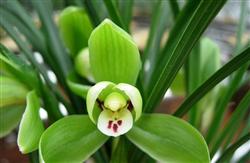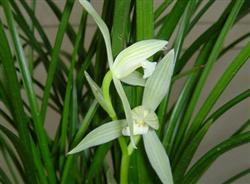Control of common diseases in orchids

1. Phytophthora disease: it occurs all the year round, but in the plum rain season, the disease is the most serious when watering is too wet or poor ventilation, especially the seedlings just out of the bottle are the most vulnerable. The infected site produced brown disease spot, which expanded rapidly in high temperature and humidity, and finally showed black brown spot, and deciduous stem rot until the plant died. Prevention and treatment methods: (1) avoid excessive humidity, improve ventilation conditions, (2) avoid partial use of nitrogen fertilizer, reduce plant overgrowth and weakness (3) spray more than 800 bacteriophage or 1000 Haoshengling solution (4) smear the wounds resected by diseased plants with large cornmeal, and then place them in a dry place without watering for a week, which can curb the spread of the disease. 2. Anthrax: it is susceptible to diseases such as too dense planting, poor ventilation, moisture imbalance or injured wounds. At the initial stage of the disease, the leaves produce brown sunken spots, which later expand into round or irregular spots, and in severe cases, there is gangrene in the center of the spot. Prevention and control methods: (1) planting is not too dense. Increase the light Good drainage and ventilation should be required. (2) cultivate strong seedlings and do not move plants frequently to avoid damage and disease. (3) cut off the diseased leaves and smear the wound with 1max 500 times Dasheng-45 water solution and 1 pound 800 times carbendazim solution. (4) spray 1 000 times methyl topiramate or carbendazim once a week. 3. Soft rot disease: high temperature and humidity in spring and summer, poor ventilation The disease is more likely to occur when excessive application of nitrogen fertilizer. At the initial stage, the waterlogged disease spots were produced by bacteria invading the leaves or heart leaves, which expanded rapidly and contained more water, but in the later stage, the diseased leaves became yellow and fell off, and the whole plant died of soft rot. The disease spreads rapidly and must be prevented and treated as soon as possible. Prevention and treatment methods: (1) improve growth conditions, increase ventilation, reduce temperature and humidity (2) remove susceptible parts, smear with antibiotic powder and do not water for a week, the spread of the disease can be prevented (3) 1000 times of streptomycin water solution. Stone sulfur mixture or Bordeaux solution Spraying once a week. 4. Leaf blight disease: the leaf tip produces small black spots, which gradually expand into irregular disease spots, which form dark brown around the disease spots, light grayish brown in the middle, spread the whole leaf in serious cases, and finally wither and fall leaves. Prevention and treatment methods: (1) remove diseased leaves and spray 500x Dasheng-45 or 1000-fold Haoshengling (2) susceptible plants should avoid Rain Water or suspend watering, and prevent aggravation of the disease. (3) spraying 500x Dasheng-45 regularly once a day to prevent white silk disease: Cymbidium is more prone to this disease, and at the initial stage, the base of the pseudo-corm blackens and rotts. Gradually produce white hyphae on the disease spot, and the diseased plant gradually withered and died. Prevention and treatment methods: (1) remove the pseudocorm with disease spot, together with the planted pot and plant material to burn with fire (2) spray 500x Dasheng-45 liquid or 1000 times carbendazim water solution once a week.
- Prev

Orchid pest control
1. Cymbidium is commonly known as blue lice, which is one of the most common and common pests in bluegrass. This ostracod is covered with a brown flat round wax shell with a diameter of about 0.1 cm, shaped like a flea, and adsorbs on both sides of the leaf or inside and outside the leaf sheath. The worm uses filamentous mouthparts to suck the liquid in the leaves. After scraping off the worm, on the leaf surface.
- Next

Orchid virus diseases General characteristics
Orchid virus disease is the number one killer affecting orchid cultivation, orchid lovers all talk about virus and color change. Orchid virus disease is everywhere. It infects not only cultivated orchids but also wild orchids grown in nature. Once infected by the virus, orchids can be appreciated and cultivated...
Related
- Fuxing push coffee new agricultural production and marketing class: lack of small-scale processing plants
- Jujube rice field leisure farm deep ploughing Yilan for five years to create a space for organic food and play
- Nongyu Farm-A trial of organic papaya for brave women with advanced technology
- Four points for attention in the prevention and control of diseases and insect pests of edible fungi
- How to add nutrient solution to Edible Fungi
- Is there any good way to control edible fungus mites?
- Open Inoculation Technology of Edible Fungi
- Is there any clever way to use fertilizer for edible fungus in winter?
- What agents are used to kill the pathogens of edible fungi in the mushroom shed?
- Rapid drying of Edible Fungi

